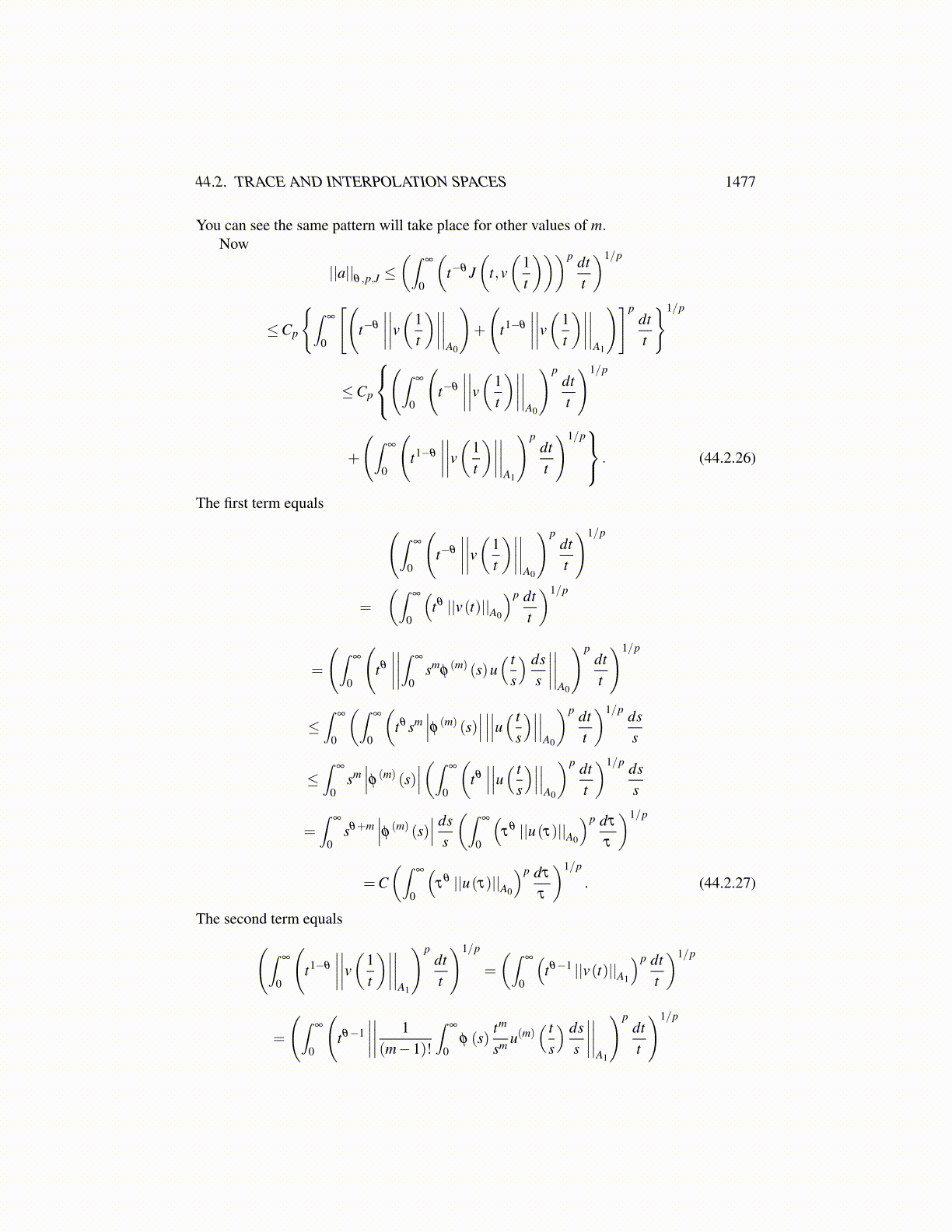
44.2. TRACE AND INTERPOLATION SPACES 1477
The case when m = 1 was discussed in Section 44.1. Note it is not known at this pointwhether limt→0+ u(t) even exists for every u ∈ V m. Of course, if m = 1 this was shownearlier but it has not been shown for m > 1. The following theorem is absolutely amazing.Note the lack of dependence on m of the right side!
Theorem 44.2.3 The following hold.
T m (A0,A1, p,θ) = (A0,A1)θ ,p,J = (A0,A1)θ ,p . (44.2.19)
Proof: It is enough to show the first equality because of Theorem 43.7.5 which identi-fies (A0,A1)θ ,p,J and (A0,A1)θ ,p. Let a ∈ T m. Then there exists u ∈V m such that
a = limt→0+
u(t) in A0 +A1.
The first task is to modify this u(t) to get a better one which is more usable in order toshow a ∈ (A0,A1)θ ,p,J . Remember, it is required to find w(t) ∈ A0 ∩A1 for all t ∈ (0,∞)
and a =∫
∞
0 w(t) dtt , a representation which is not known at this time. To get such a thing,
letφ ∈C∞
c (0,∞) ,spt(φ)⊆ [α,β ] (44.2.20)
with φ ≥ 0 and ∫∞
0φ (t)
dtt= 1. (44.2.21)
Then define
ũ(t)≡∫
∞
0φ
( tτ
)u(τ)
dτ
τ=∫
∞
0φ (s)u
( ts
) dss. (44.2.22)
Claim: limt→0+ ũ(t) = a and limt→∞ ũ(k) (t) = 0 in A0 +A1 for all k ≤ m.Proof of the claim: From 44.2.22 and 44.2.21 it follows that for ||·|| referring to
||·||A0+A1,
||ũ(t)−a|| ≤∫
∞
0
∣∣∣∣∣∣u( ts
)−a∣∣∣∣∣∣φ (s)
dss
=∫
∞
0||u(τ)−a||φ
( tτ
) dτ
τ
=∫ t/α
t/β
||u(τ)−a||φ( t
τ
) dτ
τ
≤∫ t/α
t/β
εφ
( tτ
) dτ
τ= ε
∫β
α
φ (s)dss
= ε
whenever t is small enough due to the convergence of u(t) to a in A0 +A1.Now consider what occurs when t→ ∞. For ||·|| referring to the norm in A0,
ũ(k) (t) =∫
∞
0φ(k)( t
τ
) 1τk u(τ)
dτ
τ